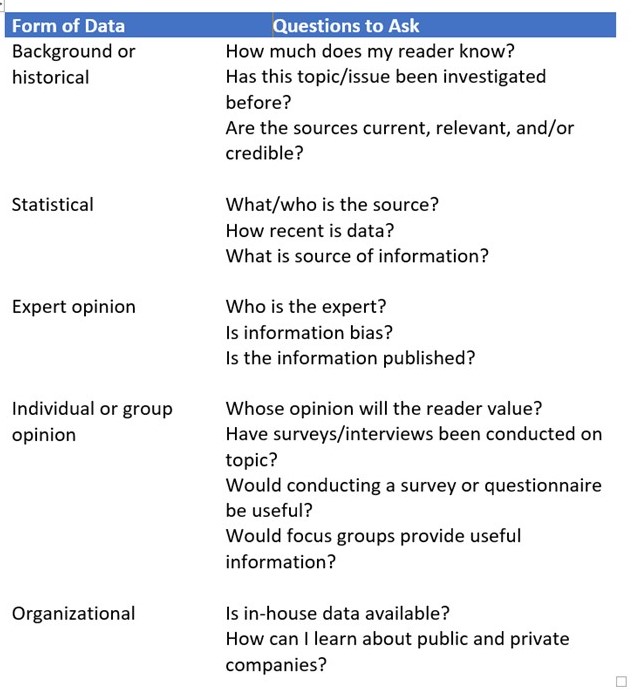Formal Reports
Learning Objectives
 After studying this unit, you will be able to
After studying this unit, you will be able to
-
-
- understand the function and format of a formal report
-
Introduction
Formal reports have a more formal tone, tackle complex and challenging topics, and are almost often analytical in nature. Similar to informal reports, formal reports are also organized into sections and utilize headings and subheadings to help readers access information. Formal reports are typically longer than informal reports (often 10+ pages), and for that reason, are often called long reports. The following video provides and comprehensive overview of the formal report.
Conducting Research
An informal report may be written without including any research. However, the same cannot be said of the formal report. Because of the scope and complexity of formal reports, there is a need for in-depth and extensive data research and analysis. Collecting research is a critical part of writing the formal report. The conclusion should be based on facts, statistics, expert knowledge and other forms of information. Thus, collecting credible, up-to-date, and reliable information is a critical part of writing a formal report. Given the easy access to research databases, the internet, and other sources of digitized information, collecting information is nearly effortless today.
Table 5.4.5 Types of Report Data

Documentation
Whenever research based on other people’s work is included in a report, credit must be given to that work. This is called documentation. Proper documentation adds credibility to the information presented in a report and protects the writer against charges of plagiarism. Famous historians, high-level journalists, politicians, and educators have suffered grave consequences for not providing the required documentation.
To add clarity to writing and avoid charges of plagiarism, document the following:
- another person’s ideas, opinions, examples, or theory
- Any facts, statistics, graphs, and drawings that are not common knowledge
- Quotations or another person’s actual spoken or written words
- Paraphrases of another person’s spoken or written words
- Visuals, images, and any kind of electronic media
Additional Resources from NSCC’s Library
Exercise

-
-
- Select five business articles from a combination of print and online resources. Using APA, develop a Reference list of those resources.
- Select a professional journal for your field of study. Select an article that is at least five pages long, of interest to you, and provides information on emerging trends in your field. Write an executive summary of the article for a busy executive who does not have time to read the entire article but who needs to stay current on what is happening in your field of expertise.
-
References
Acadia University. (2017). You quote it, you note it. Vaughan Memorial Library. Retrieved on January 14, 2020, from https://library.acadiau.ca/files/sites/library/tutorials/flash/you_quote_it_you_note_it/index.html
GreggLearning. (2019). Writing long reports [Video]. Youtube. Retrieved from https://www.youtube.com/watch?v=szFDwdS-D8k
Guffey, M., Loewry, D., & Griffin, E. (2019). Business communication: Process and product (6th ed.). Toronto, ON: Nelson Education. Retrieved from http://www.cengage.com/cgi-wadsworth/course_products_wp.pl?fid=M20b&product_isbn_issn=9780176531393&template=NELSON
Meyer, C. (2017). Communicating for results (4th ed.). Don Mills, ON: Oxford University Press. Retrieved from https://oup-arc.com/access/meyer-4e-student-resources#tag_case-studies
CHAPTER ATTRIBUTION
Unit 40: Report Type and Function: Formal Report – Communication@Work (senecacollege.ca) in Communication@Work by Jordan Smith published by Seneca College is licensed under a Creative Commons Attribution 4.0 International License.

